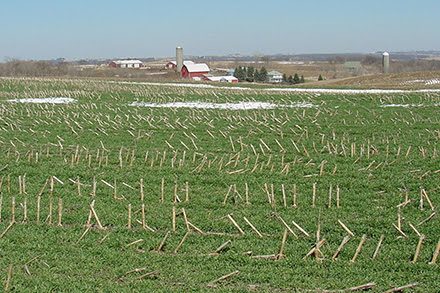- Establishing a winter rye cover crop between corn-soybean rotations in tile-drained fields (meaning, those using a system of underground drainage pipes to remove excess water) reduced nitrate levels in drainage water by more than 45 percent compared to rye-free fields—or about 21 and 44 kilograms per hectare, respectively.
- Across the 63-total million hectares (approximately 156 million acres) of North Central farmland that the model’s simulations encompassed, use of a winter rye cover crops on tile-drained fields translated to a 27 percent reduction in nitrate loads entering the Gulf of Mexico via the Mississippi River basin.
Being Intentional with Cover Crops in Your Farm System
At last week’s National Strip-Tillage Conference in Madison, Wis., I had a chance to catch up with Gary Zimmer, also known as the father of biological farming, who was attending the conference in hopes of learning more about how strip-till can fit into his biological farming practices.





Post a comment
Report Abusive Comment